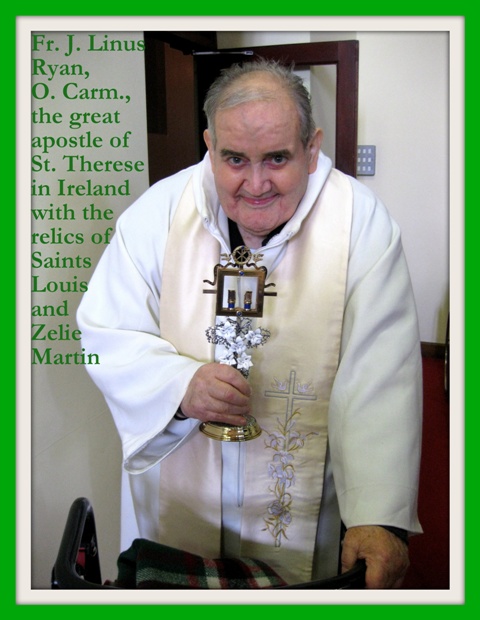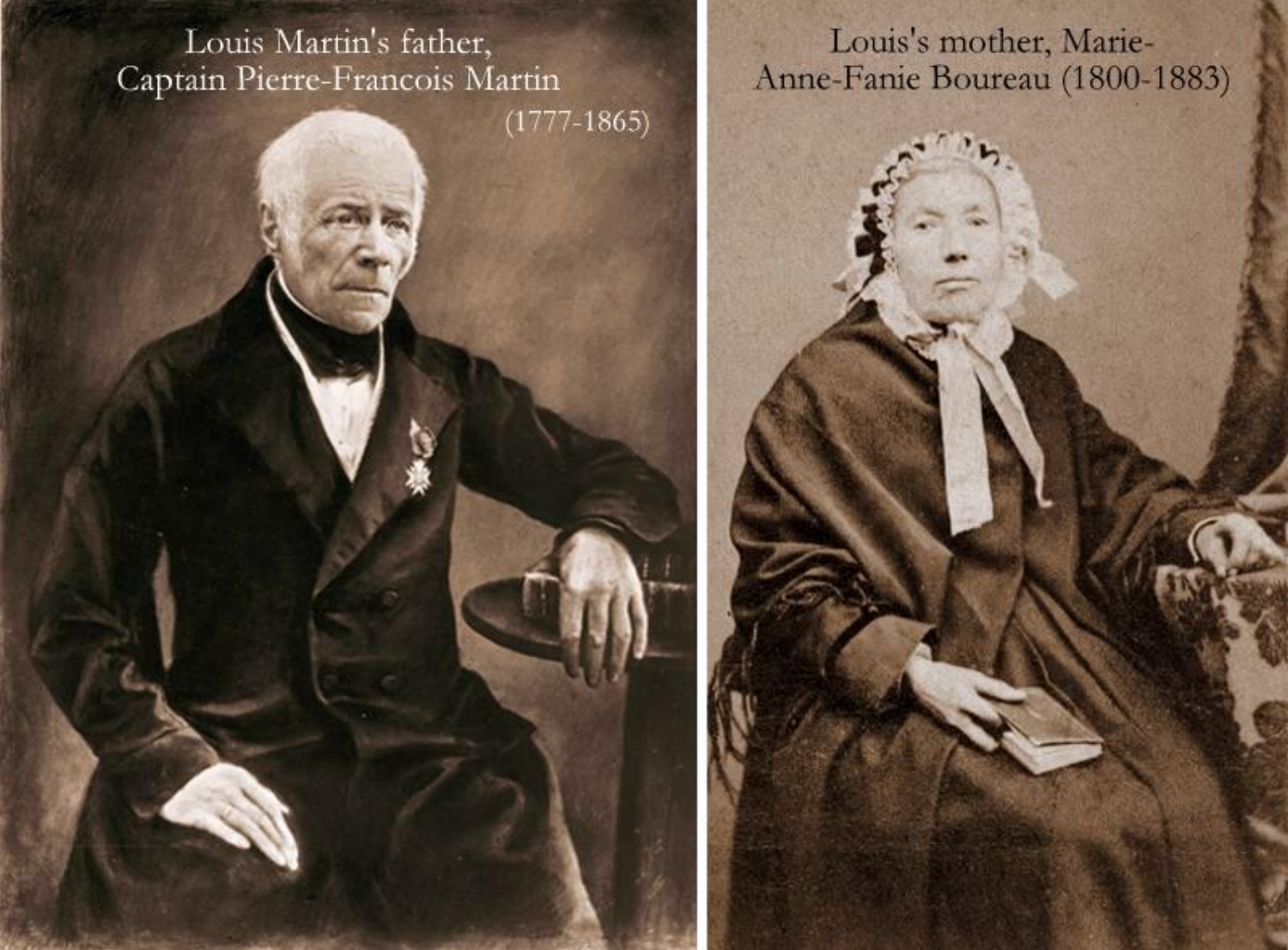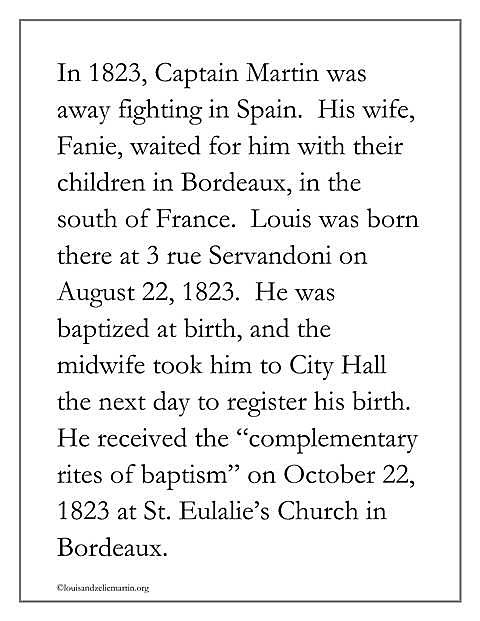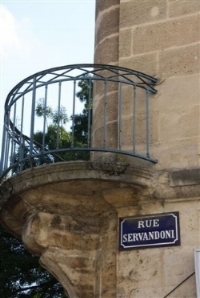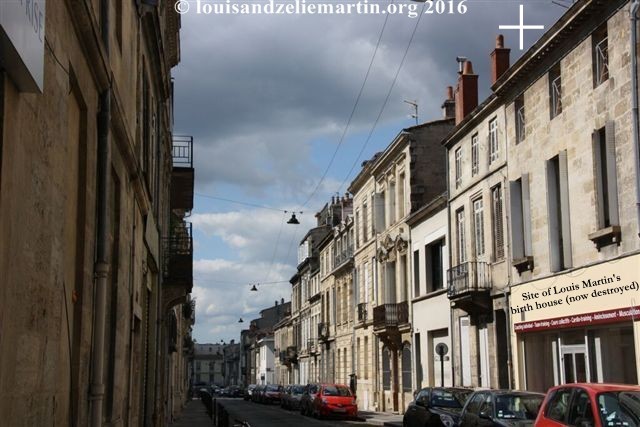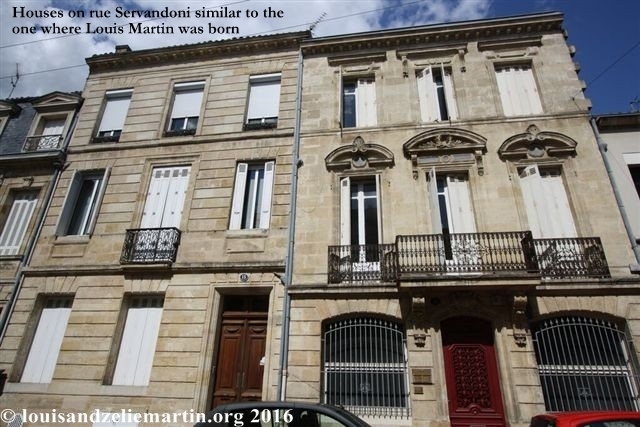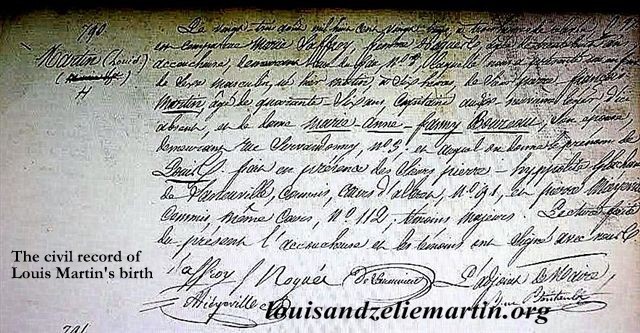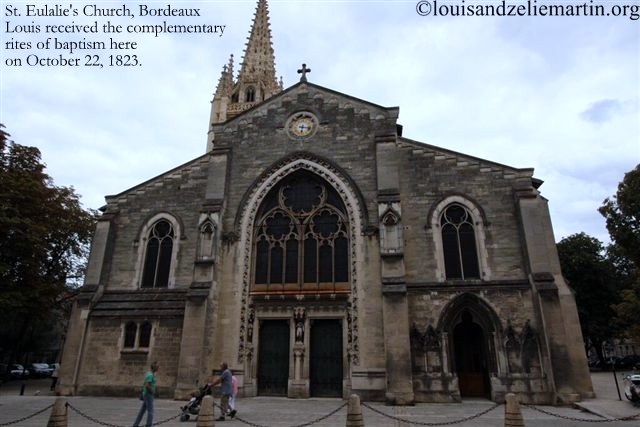Sts. Louis and Zelie Martin on Valentine's Day: "Witnesses of Conjugal Love"
/Homily of His Eminence
CARDINAL JOSE SARAIVA MARTINS
Prefect Emeritus of the Congregation
for the Causes of Saints
Representative of the Holy Father
BENEDICT XVI
On the occasion of the beatification
of the Venerable Servants of God
LOUIS MARTIN AND ZÉLIE GUERIN
lay persons, spouses, and parents
"...shine like lights in the world,
as you hold on to the word of life" Ph.2,15d-16a
WITNESSES OF CONJUGAL LOVE
Basilica of Saint Thérèse of the Child Jesus
October 19, 2008
XXIXth Sunday in Ordinary Time
World Day of Missions
The medallion Louis designed and gave Zélie during the wedding ceremony as a souvenir of their marriage. At right, the front side: the biblical figures of Sarah and Tobias, with the names “Louis” and “Zélie” under them. At left, the reverse: a wreath of roses with the initials “M.L. (Louis Martin) united to G. Z. (Zélie Guerin), July 13, 1858.”
WITNESSES OF CONJUGAL LOVE
Venerable colleagues in the Episcopate and the Priesthood,
Eminent Authorities, Dear pilgrims, brothers and sisters, in Christ.
"Worthy of Heaven"
Thérèse wrote in Story of a Soul: “Ah! my Jesus, pardon me if I am unreasonable in wishing to express my desires and longings which reach even unto infinity. Pardon me and heal my soul by giving her what she longs for so much! . . . ”(Ms B 2v). Jesus always answered the prayers of Thérèse, even those that she confided in a letter to Fr. Bellière, which many people now know by heart: “the good God gave me a father and a mother more worthy of Heaven than of earth.” (LT 261).
I have just finished the Rite of Beatification with which the Holy Father has inscribed conjointly the two spouses in the Book of the Blessed. This Beatification of Louis Martin and Zélie Guérin, whom Thérèse described as “parents without equal, worthy of Heaven, holy soil impregnated with a virginal perfume,” is a great first.
My heart gives thanks to God for this exemplary testimony of conjugal love, capable of encouraging Christian homes in the complete practice of Christian virtues in the same way that it aroused the desire for holiness in Thérèse.
While I was reading the Apostolic Letter of the Holy Father, I thought of my father and my mother, and I would like, now, for you also to think of your Papa and your Mama, so that together we may thank God for having created and made us Christians through the conjugal love of our parents. If having been given life is a marvellous thing, for us, it is yet more admirable that our parents led us to the Church, which alone is capable of making Christians. No one can make himself a Christian by himself.
Children of Normandy, a gift for all
Among the vocations to which people are called by Providence, marriage is one of the most noble and elevated. Louis and Zélie understood that they could sanctify themselves not despite marriage but through, in, and by marriage, and that their nuptials would be considered as the starting point for a rising together. Today the Church does not only admire the holiness of these children of Normandy, a gift for all, but She is reflected in this Blessed couple who contribute to make more splendid and beautiful the gown of a bride married in the Church. She doesn't only admire the holiness of their life; she recognizes in this couple the eminent holiness of the institution of conjugal love as conceived by the Creator Himself. The conjugal love of Louis and Zélie Martin is a pure reverberation of the love of Christ for his Church, but it is also a pure reverberation of the love "resplendent, without spot or wrinkle or any such thing, but holy and immaculate" (Ephesians 5, 27) in the manner that the Church loves her spouse: the Christ. The Father "chose us before the foundation of the world, to be holy and blameless before him, in love" (Ephesians 1, 4).
Only the violent take heaven by force
Louis and Zélie gave witness to the radicalism of the evangelical engagement of the vocation of marriage, even to the point of heroism, for "from the days of John the
Baptist until now, the kingdom of heaven suffers violence, and the violent are taking it by force” (Matthew 11, 12). Those who are violent in their speech are not the violent that God asks for, nor those who suffer tortures. It is those who do violence to themselves, who are moderate, gentle and peaceful. The Martins were not afraid to do violence to themselves to take the kingdom of heaven by force, and thus they became the “light of the world” that today the Church “sets on a stand to give light to all in the house [Church]. Just so, your light must shine before others, so that they may see your good deeds and glorify our heavenly Father." Their example of Christian life is like "a city built on a mountain which can no longer be hidden" (Mathew 5, 13-16).
The message the Gospel in the Martin home was not just a word
The words of the apostle Paul in the first letter to the Thessalonians, on this Sunday,
don't sketch out only the life of each Church (Diocese), of each ecclesial community (parish), but also--and this can appear paradoxical---it is the program of life for all Christian families. What is affirmed for the Church can also be affirmed for the family,
a little domestic Church, a living and vital cell that gives life to the members of the Church, through which the Church exists and carries out the mission desired by the Head of its body: the Christ.
But the words of the apostle also trace the moral and spiritual portrait of the newly beatified: Louis and Zélie practiced throughout their lives an active faith, a charity that goes beyond what is required, a hope that holds firm in our Lord Jesus Christ and in the presence of God our Father. We know it, beloved sisters and brothers of God, and today the Authority of Peter has confirmed it for us: the Martin spouses were chosen by God. Indeed, the message of the Gospel with them was not only words, but power, the action of the Holy Spirit, absolute certitude.
The Gospel at the Martins was not simply words. "Master", they said to him, "we know it: you are always true and you teach the true path of God": for them, Jesus is the Master, the only Master who teaches the true path of God. There is no dichotomy between Jesus and the Church: Jesus and the Church are one, they are no longer two but one flesh, as with man and woman, as the husband is united to his spouse, Jesus is the Church, the Church is Jesus. Louis and Zélie "are not two wax saints, without ardor, without passion.
They are two beings of flesh and blood who love each other with fervor, who each wanted the other to be happy, who were so united that the least separation weighed heavily upon them" (Fr. Piat).
"Master, give us your advice"
But what is the secret of the success in their Christian life? "You have been told, O man, what is good and what the Lord requires of you: Only to do the right, and to love goodness, and to walk humbly with your God" (Micah 6, 8). Louis and Zélie: a man and a woman who walked humbly with God in search of the counsel of the Lord. “Master, give us your opinion.” They looked for the counsel of the Lord. They thirsted after the counsel of the Lord. They loved the counsel of the Lord. They conformed themselves to the counsel of the Lord without complaining and without discussion or, worse, contesting it. And to be sure and certain of walking in the true counsel of the Lord, they always turned toward the Church, expert mistress in humanity, and towards its teaching. There is no aspect of their private or public life that is not in perfect harmony with the teachings of the Church, teachings of their time as well as of ours.
”Hypocrites! Why do you want to put me to the test?” We have the impression that this way of questioning the Christ--or the Church--is not only an attitude of contemporaries of Christ or of opponents of Christ, but it is brewing in a sly way, disguised under the form of rationality, even in Christian circles . . . . Questions are posed, not for the purpose of knowing the truth, but to turn them into objections. Christ’s response, and that of the Church, is always the same, yesterday as today: “Hypocrites! Give unto Caesar what is Caesar's, and unto God that which is God's.”
"God, the first served!"
For the Martin spouses, “that which is Caesar's and that which is God's” was very clear. There was no hesitation with putting God first in their life. "My Lord God, first served" was the emblem of Joan of Arc, and the Martins made it the emblem of their home. It is remarkable to see how this couple always submitted themselves to the divine will. In their home, God was always the first served. When a trial touched their hearth, their spontaneous reaction was always the acceptance of the divine will. When Madame Martin said, as she often did, "God is Master, He does what He wants,” Monsieur Martin echoed her in saying: “God, first served.” They served God in serving the poor, neither as an outpouring of generosity, nor as social justice, but simply because the poor are Jesus. To serve the poor is to serve Jesus, or, giving to God what is God's: "whatever you did for one of these least brothers or sisters of mine, you did for me" (Matthew 25, 34-40).
Heaven is not empty, "Heaven is filled with souls"
In several minutes we will proclaim our Profession of Faith that Louis and Zélie repeated so many times at Mass and above all taught their children. After having confessed the Holy Catholic Church, the Symbol of the Apostles adds the Communion of saints. This term designates not only the assembly of all the saints but also the communion of holy people in the Christ who died for all; the lives of those people who acted for Christ or suffered for him bear fruit for all.
In the Gospel that she carried with her, Thérèse had written the Credo with her own blood, and we all know the love she had for the Church: “In the heart of the Church, my mother, I will be Love!” That love for the Church Thérèse saw in the teaching of her parents and learned by heart on their knees. “I believed, I felt there was a heaven and that this heaven is filled with souls who actually love me, who consider me their child.... ” (Ms B 2v),
“In this Heaven filled with souls”--as Thérèse said-- today we can count from now on the Blessed Louis and Zélie, whom we invoke for the first time: “Louis and Zélie, pray God for us. I beg you, cherish us, look on us as your children. Cherish the entire Church. Cherish above all our homes and our children.”
--Louis and Zélie are a gift for young engaged couples because of the courage they showed in obeying the Church even when this required them to go against the tide, to go against their inclination. They weren't afraid of such words as purity, chastity, or virginity; they didn't take shortcuts; they spent their premarital time of engagement, brief as it was, respectful of the will of God and the teachings of the Church.
--Louis and Zélie are a gift for spouses of all ages through the esteem, the respect, and the harmony with which they loved each other in marriage for nineteen years. She wrote to him “I can't live without you, my dear Louis.” He replied to her “I am your husband and friend who loves you for life.” They lived out heroically the matrimonial promises of faithfulness to the commitment, of the indissolubility of the bond, of the fruitfulness of love in happiness as well as in trial, in health as well as in sickness.
--Louis and Zélie are a gift for parents by the evangelical abnegation with which, in common agreement, they wanted many children to offer to the Lord. Veritable ministers of love and life, they sought fecundity as service. We all admire Thérèse, incomparable child of this couple, masterpiece of God’s grace but also masterpiece of their love toward life and children.
--Louis and Zélie are a gift for educators because they respected and wisely guided the vocational choices of their children. Madame Martin wishes her daughters to lead a holy life, in the vocation that God gives them (Correspondance Familiale, letters 154, 163, 184). We know that during their youth, Louis and Zélie, before meeting, had thought seriously of a consecrated religious life. Did their hearts hold some nostalgia for the vocation to consecrated life? Yes. Certainly. In all seriously considered Christian vocations, there is the possibility of all the other vocations. Even this Thérèse learned through her parents, as she wrote in Story of a Soul, that she would have desired all the vocations and all the missions possible.
--Louis and Zélie are a gift for all those who have lost a spouse. Today, perhaps more than ever, widowhood is a condition that is hard to accept. Louis lived the loss of his wife with faith, going so far as to make a gift of himself. He did not listen to his legitimate personal wishes; he denied them for the good of his children.
--Louis and Zélie are a gift for those who must face coming death. Zélie dies of breast cancer; Louis ends his existence because of cerebral arteriosclerosis. In a world that has made death commonplace and which abandons those who are dying, they taught us to look death straight in the face, surrendering themselves to God. In a world which asks itself where to find reasons that justify death, we offer the human and Christian example
of Louis and Zélie. She wrote to her husband: “the good God gave me the grace to not be afraid [of death], I feel very peaceful. I am almost happy. I wouldn't change my lot for any other.” Louis also is sustained by the same sentiment. When he is told that the whole family is making a novena to St. Joseph to ask for his healing, he answers: “No, you mustn't ask that, but only the will of God.”
Exemplary model of a missionary home
Finally, I give thanks to God on this 82nd Day of World Missions, because Louis and Zélie are an exemplary model of a missionary home. This is the reason that the Holy Father wanted the beatification to take place on this day so dear to the Church Universal, to unite the masters Louis and Zélie to the disciple Thérèse, their daughter, who became the Patroness of Missions and a Doctor of the Church.
The testimony of the Martin children on the subject of the missionary spirit that reigned in their home is unanimous and striking. "My parents were much interested in the salvation of souls... But the work of the apostolate the best known in our house was the Propagation of the Faith, for which, each year, my parents made a very large offering. It is this zeal for souls that made them want so much to have a missionary son and daughters in religious life. My father, in his devotion to [Saint Francis Xavier] the apostle of the Indies, liked to sign himself ‘Xavier.’” (Positio, Vol. II, p. 972).
Thérèse tells us “Papa rewarded me by giving me a pretty little coin worth four sous. I placed it in a box which was to receive a new coin of the same value every Thursday. It was from this box that I drew my offerings on the big feasts when there were special collections for the Propagation of the Faith or other similar works.” (Positio, Vol. II, pp. 895-896).
Quite recently, Cardinal Dias, Prefect of the Congregation for the Propagation of the Faith, wrote: "For a disciple of Christ, to announce the Gospel is not an option but a commandment of the Lord . . . . A Christian must consider himself to be on a mission (...) to spread the Gospel in each heart, in each home, in each culture.” (Lambeth Conference, July 23, 2008).
But the Martin family didn't have only admirers. Many saw in them the numerous defects of the century of the "belle époque" which translates into a mediocre history and which has nothing extraordinary. They recalled that the ground where Thérèse flowered was poor soil and banal from a cultural and religious point of view. I don't know, truthfully, if there exist better or worse time periods for the "quality" of people who lived there, but among them, there are persons whom the Church recognizes as models of saintliness. This husband and wife lived within the limits of their own time, even as we do, but they were passionate disciples of Jesus until the day they went to Paradise. I have no doubt about the mystery of the saintliness of Louis Martin and Zélie Guérin, but for those who have doubts, I turn again to the words of little Thérèse, which are, even in this case, those of a Doctor of the Church:
"Jesus deigned to teach me this mystery. He set before me the book of nature; I understood how all the flowers He created are beautiful, how the splendor of the rose and the whiteness of the lily do not take away the perfume of the little violet or the delightful simplicity of the daisy . . . I understood that if all the flowers wanted to be roses, nature would lose her springtime beauty, and the fields would no longer be decked out with little wildflowers . . .
And so it is in the world of souls, Jesus’ garden. He willed to create great saints comparable to lilies and roses, but He has created smaller ones, and these must content to be daisies or violets destined to give joy to God’s glances when He looks down at His feet. Perfection consists in doing his will, in being what He wills us to be...." (Oeuvres complètes, Ms A 2v, p.72).
My sisters, my brothers, may your families, your parishes, your religious communities of Normandy, of France . . . and of the entire world, be also holy and missionary homes, as was the home of the Blessed spouses Louis and Zélie Martin. This evening, if you look into the heavens, next to the name of Thérèse you will also see sparkling the names of her papa and her mama. Amen.
translated by Susan Ehlert for thereseoflisieux.org





